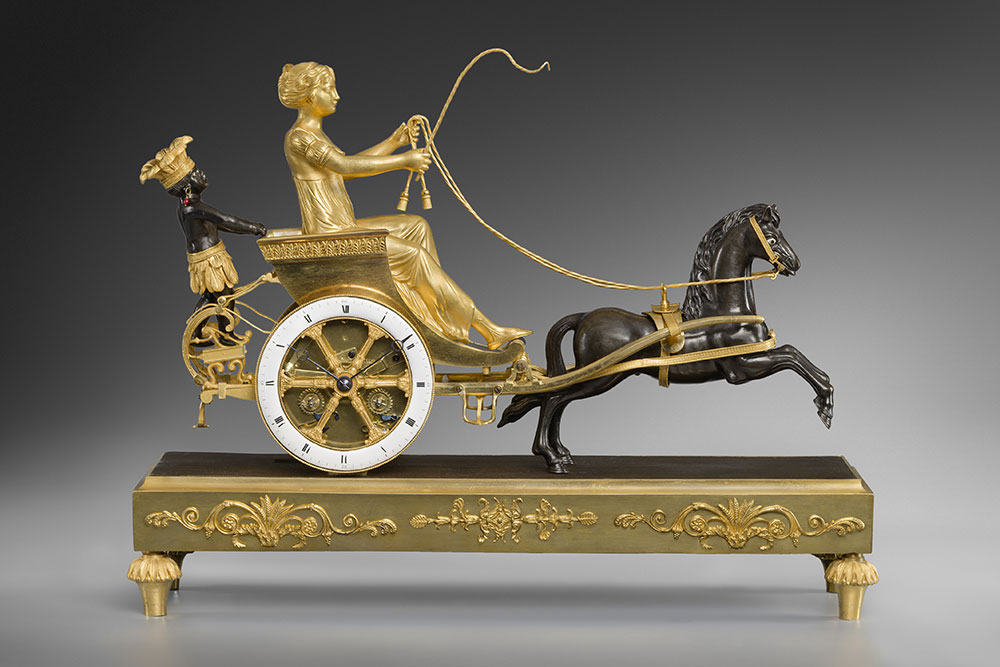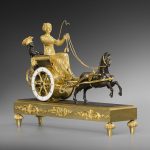A negro clock by Deverberie

pendule ancienne
A Directoire gilt bronze clock depicting a young Louisiana woman sitting in a wagon
returning from the plantations, a young Negro placed on the rear step,
model by the bronzier, Jean-Simon Deverberie – 1795-1799
Height: 35 cm. (13 ¾ in.) Width: 45.5 cm. (18 in.) Depth: 12.8 cm. (5 in.)
The enamel dial with Roman numerals indicating the hours and Arabic numerals for the minutes of the quarters with blued steel hands. The circular movement has a recoil lever escapement and silk-thread suspension and strikes the hours and half-hours by means of a count wheel on the back plate.
Comparative Literature
Identical clocks include those amongst the collections of:
- the musée François Duesberg, in Mons in Belgium.
- the Princes of Hesse at Schloss Fasanerie in Fulda in Germany.
Another one, formerly in my gallery, was illustrated in B. Mura, ‘Les pendules au nègre à l’heure de Deverberie’, L’Estampille-l’Objet d’Art, no. 241, November 1990, pp. 36-37 and P. Kjellberg, Encyclopédie de la pendule Française du Moyen Age au XXe siècle, Paris, 1997, p. 345, E.
Jean-Simon Deverberie (1764-1824)
Deverberie’s designs and preparatory drawings are preserved in Paris in the Department of Prints and Drawings of the Bibliothèque nationale de France – where they are dated 3 pluviôse an VII (22 January 1799) – at the Musée des Arts Décoratifs and at the Bibliothèque Doucet. They depict decorative clocks and the negro models made during the Directoire period and the early 19th Century.
In the Doucet library’s album, they bear the following inscription:
« Inventé par De Verberie et Cie, tout se fait dans leur Manufacture : le bronze, dorure et l’horlogerie, rue des Fossés du Temple, N°47 à Paris »
(Invented by De Verberie and Co. All bronze, gilding, and clockmaking entirely made in their factory at 47 Rue des Fossés du Temple, Paris)
Recommendations for dating the Negro clocks made by Jean-Simon Deverberie:
– The subjects are always made of patinated and not varnished bronze.
– The figures’ eyes are always made of enamel, never painted or glass.
– The Negroes’ ears are always pierced and





